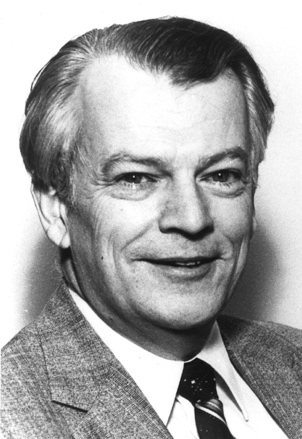Thomas (T.) Francis Ogilvie, professor emeritus of ocean engineering, passed away on March 30, at the age of 89. Ogilvie dedicated most of his career to improving how ocean engineering and naval architecture programs educated students. He served as department head for MIT’s Department of Ocean Engineering — then known as Course 13 — from 1982 to 1994.
Born in Atlantic City in 1929, Ogilvie was surrounded by ocean and boats throughout his childhood. Despite his fascination with boats, he developed an aversion to the water that surrounded him due to a dislike of getting wet. At just 16, Ogilvie enrolled in Cornell University where he studied physics. While at Cornell, he was also appointed to the position of campanologist — or bell-ringer. As bell-ringer, he would climb Cornell’s bell tower and move huge levers to sound the bells over campus, serving as an alarm clock for his fellow students.
After graduating with his bachelor’s degree in physics from Cornell, Ogilvie realized that he could study boats without getting wet. In 1951, he took a job as a physicist at the U.S. Navy’s David Taylor Model Basin (DTMB) in Maryland. While at DTMB, Ogilvie conducted research on the dynamic response of ship structures to explosive loading. He later moved on to study the wave dynamics of ships, submarines, and hydrofoils. During this time, the U.S. Navy acknowledged Ogilvie’s important contributions with a Meritorious Public Service Award in 1955.
Ogilvie received his master’s degree in aeronautical engineering from the University of Maryland in 1957. Three years later, he received his PhD in engineering science from the University of California at Berkeley. After receiving his doctorate, Ogilvie moved to London for eighteen months where he served as a Liaison Scientist for the Office of Naval Research. Upon returning to the U.S., he worked at DTMB for three more years.
In 1967, Ogilvie transitioned into a career in academia. He acted as associate professor of naval architecture and marine engineering at The University of Michigan, where he also taught fluid mechanics. He was eventually named chairman of the Department of Naval Architecture and Marine Engineering at the University of Michigan.
As chairman, Ogilvie made substantial changes to the department. He was responsible for a total restructuring of the undergraduate curriculum and helped develop their graduate program. Thanks in large part to his ability to garner donations from both industry and alumni, Ogilvie was responsible for the modernization of the department’s experimental facilities and the construction of a new building to house the department.
In 1981, he resigned from his role at the University of Michigan, and in 1982 he arrived at MIT as professor and department head of ocean engineering. He served as department head for 12 years.
As with his time in Michigan, Ogilvie made a number of substantial changes to MIT’s Department of Ocean Engineering. He revised the undergraduate program — now known as Course 2-OE — and helped launch several new laboratories. One of the most impactful changes he made as department head was integrating MIT’s Naval Construction and Engineering Program into MIT’s School of Engineering.
Ogilvie was beloved by his colleagues in ocean engineering at MIT. Upon stepping down as department head in 1994, he was honored with the launch of the T. Francis Ogilvie Young Investigator Lectureship in Ocean Engineering. The annual lectureship series was created in recognition of Ogilvie’s contributions to the field of ocean engineering and “with special gratitude for his commitment in mentoring and supporting young faculty and researchers.”
Throughout his career, Ogilvie was recognized with numerous awards and honors. He was invited to serve as visiting professor of naval architecture in Osaka University in Japan and honorary professor of mathematics in Manchester University in the U.K. He was a fellow and served on the executive committee of the Society of Naval Architects and Marine Engineers. In 1989, the society awarded him the William H. Webb Medal “for outstanding contributions to education in naval architecture, marine or ocean engineering.”
In 1996, the year he retired, Ogilvie also received an honorary doctorate from the National Technical University of Athens in celebration of his ship hydrodynamics research.
Ogilvie was married to Joan Husselton Ogilvie for almost 63 years, until her death in 2013. They travelled the world together and raised three children. He is survived his daughter, Nancy Ogilvie; his daughter, Beth Ogilvie, and her married partner, Susan Straghalis; and his son, Ken Ogilvie, and his wife, Sue Anderson. Donations may be made in Ogilvie’s name to the ACLU or the Alzheimer's Association.






